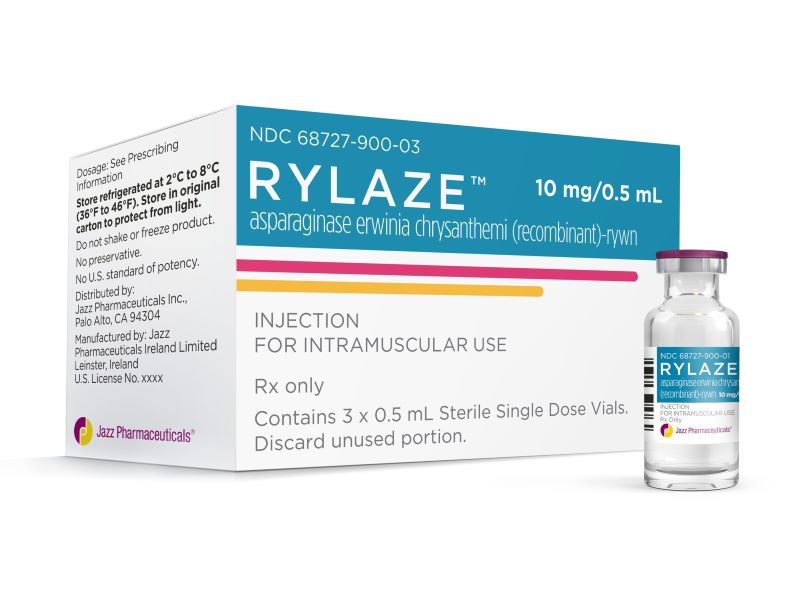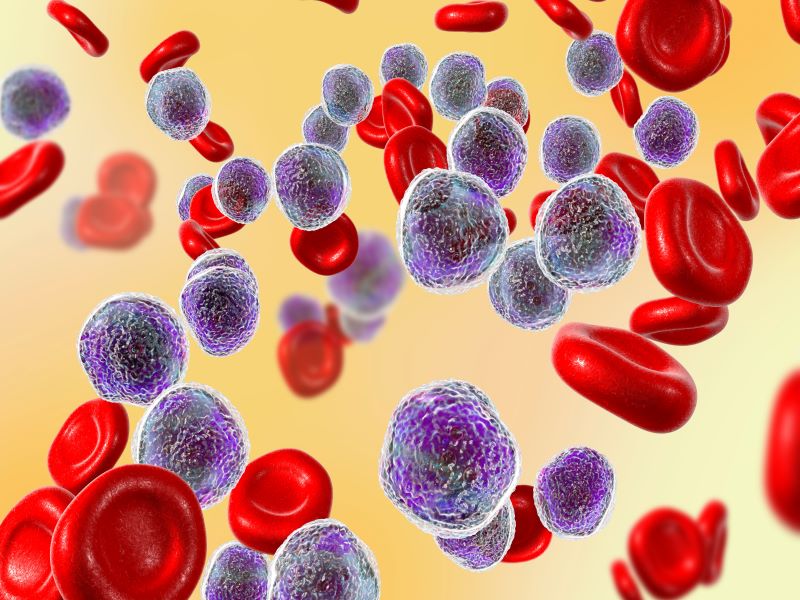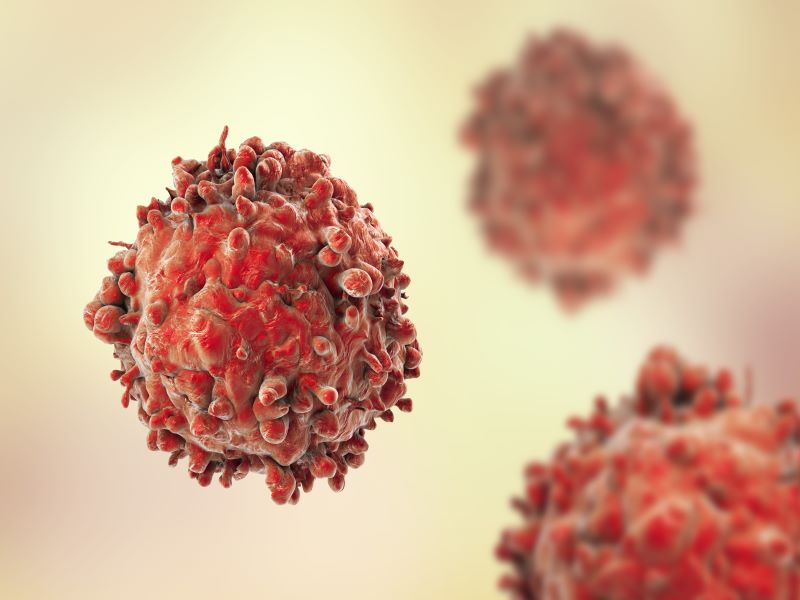Rylaze (asparaginase erwinia chrysanthemi (recombinant) rywn), formerly known as JZP458, is an asparagine-specific enzyme approved as a component of a multi-agent chemotherapy regimen for the treatment of acute lymphoblastic leukaemia (ALL) and lymphoblastic lymphoma (LBL) in adult and paediatric patients aged one month or older who are allergic to E coli-derived asparaginase treatments.
Developed by Irish biopharmaceutical company Jazz Pharmaceuticals, Rylaze is the only recombinant erwinia-derived asparaginase product that maintains a clinically meaningful level of asparaginase activity throughout treatment.
Commercially launched in the US in July 2021, Rylaze is available in a single-dose vial as a clear to opalescent, colourless to slightly yellow solution in 10mg/0.5ml dosage strength for intramuscular administration.
Approvals of Rylaze
In October 2019, Rylaze received fast track designation from the US Food and Drug Administration (FDA) for the treatment of ALL and LBL.
In December 2020, Jazz Pharmaceuticals began a biologics license application (BLA) submission for JZP458 to the FDA under the Real-Time Oncology Review (RTOR) pilot programme, seeking marketing approval.
In June 2021, the FDA approved Rylaze for the treatment of ALL and LBL. The drug also holds orphan drug designation from the FDA for these conditions.
Rylaze’s approval helps address drug shortage for patients who cannot tolerate E coli-derived asparaginase treatment, as the only other FDA-approved alternative for such patients has been in global shortage since 2016.
ALL and LBL causes and symptoms
Acute lymphoblastic leukaemia (ALL), also known as acute lymphocytic leukaemia, is a cancer of the blood and bone marrow. It is the most common type of cancer in children that progresses rapidly if left untreated. Around 50% of all people diagnosed with the condition each year in the US are children.
The cause of ALL is not known, but it occurs when a bone marrow cell develops mutations in its DNA. Symptoms of ALL may include fatigue, bone pain, fever, dizziness, shortness of breath, bruising, pale skin, frequent or heavy bleeding, and infections that do not subside or keep recurring.
LBL is a rare and aggressive form of non-Hodgkin lymphoma (NHL) that commonly occurs in teenagers and young adults. It is a cancer of immature lymphoblasts that most often originates in B-cell and T-cell lymphocytes. It usually occurs in people under the age of 35 and occurs more commonly in men than women.
Symptoms of LBL include painless swelling in the neck, armpit or groin, shortness of breath, coughing and chest pain.
Asparaginase, an enzyme that kills cancer cells, is one component of the chemotherapy regimen used for the treatment of the conditions, but around 20% of patients are allergic to the standard E coli-derived asparaginase.
Rylaze mechanism of action
Rylaze is an asparagine-specific bacterial enzyme that depletes plasma asparagine by catalysing the conversion of the amino acid L-asparagine into aspartic acid and ammonia.
The deprivation of L-asparagine amino acid starves the leukaemic cells, selectively killing them as they lack asparagine synthetase enzyme and cannot produce asparagine. Leukaemic cells rely on an exogenous source of asparagine for protein synthesis and cell survival.
Clinical trials on Rylaze
The FDA’s approval of Rylaze was based on the results of an ongoing phase 2/3 single-arm, open-label, multi-centre, dose confirmation study in ALL and LBL patients who either had hypersensitivity to E coli-derived asparaginase or experienced silent inactivation.
The drug’s efficacy was determined in 102 patients treated with the therapeutic course comprising Rylaze at various dosages to evaluate the achievement and maintenance of nadir serum asparaginase activity (NSAA) above the level of 0.1U/mL at 48 hours.
Results showed that 93.6% of patients maintained NSAA greater than or equal to 0.1U/ml at 48 hours for a dosage of 25mg/m².
The most common adverse events associated with the therapy included abnormal liver tests, nausea, musculoskeletal pain, fatigue, infection, headache, pyrexia, drug hypersensitivity, febrile neutropenia, decreased appetite, stomatitis, bleeding and hyperglycaemia.




